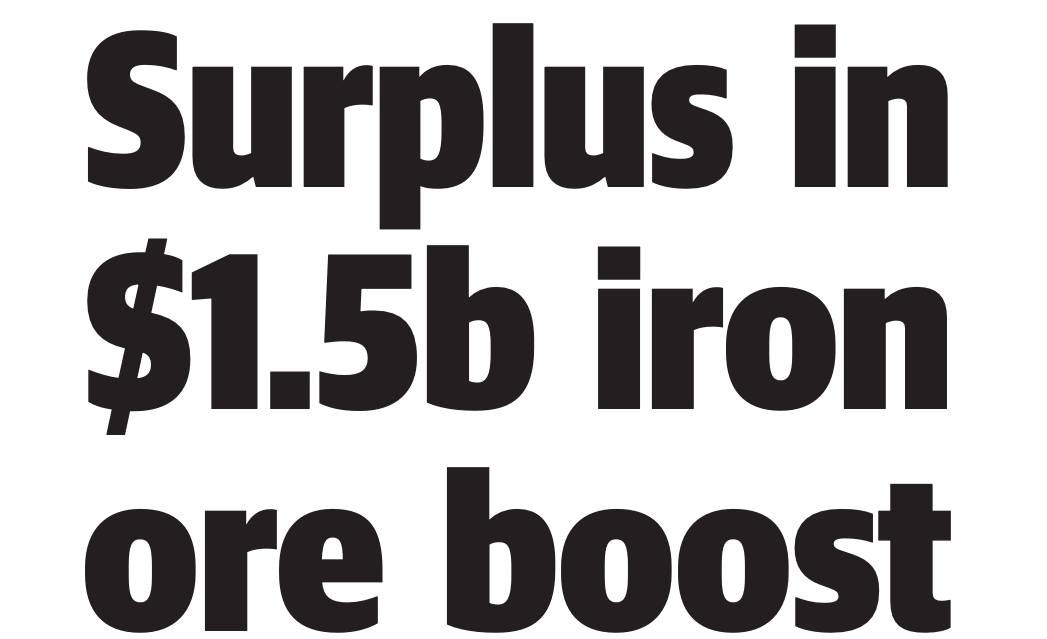Article by Josh Zimmerman courtesy of the West Australian
WA is on track to bank nearly $1.5 billion more in iron ore royalties than the McGowan Government predicted just weeks ago – a windfall that would nearly double the State’s forecast surplus to an incredible $3.7 billion.
The steel-making commodity has so far defied predictions and continued to soar in price, yesterday reaching $US169 a tonne, compared with December predictions of $US103.70.
Treasurer Ben Wyatt cautioned that the iron ore price was likely to moderate in coming months and indicated any royalties bonanza would be reinvested in infrastructure rather than used to pay down State debt, which is currently expected to peak at $42b in 2023.
Surplus in $1.5b iron ore boost WA royalties reign supreme
WA is on track to bank nearly $1.5 billion more in iron ore royalties than predicted in December – a windfall that would nearly double the State’s forecast surplus to an incredible $3.7b.
The steel-making commodity has so far defied predictions to continue to soar in price, yesterday reaching $US169 per tonne.
That in turn is pumping hundreds of millions of dollars into government coffers and helping propel the State towards its biggest ever budget surplus.
Shortly before Christmas, the McGowan Government upgraded its forecast average iron ore price for 2020-21 from $US96.60 to $US103.70 as part of the midyear Budget review.
At the same time, WA’s predicted surplus for the current financial year was upgraded by $1b to $2.2b.
But as of yesterday – with more than half the current financial year in the books iron ore was averaging $US123.74.
And in the immediate short term that average will continue to climb, with daily spot prices for the commodity touching $US170 as Chinese steel mills increase production as part of Beijing’s ambitious stimulus program.
For every dollar above the forecast average price, Treasury collects about $77 million in additional royalties. While the commodity is highly volatile, if iron ore holds at its current $US20 above estimates, that would mean an additional $1.543b being added to the Budget bottom line – pushing the surplus to $3.7b.
That would smash the current record $2.3b surplus handed down by then-treasurer Eric including Commonwealth Bank – highlighted “upside risk” in their modelling if Chinese demand remains elevated.
The McGowan Government has already pledged to set aside $1.8b of the 2020-21 surplus to replace King Edward Memorial Hospital with a new women and babies’ facility at the QEII Medical Centre.
Mr Wyatt indicated any royalties bonanza would be reinvestRipper as part of the Carpenter government in 2007.
Treasurer Ben Wyatt cautioned that the iron ore price was likely to moderate in coming months as demand from China eased and Brazilian miner Vale continued to bring its natural disaster and COVID-interrupted operations back online.
“Treasury doesn’t anticipate the currently elevated iron ore price will last due to temporary policy stimulus in China being unwound and supply returning from Brazil,” he said, adding the strength of the Australian dollar had partly offset the surge in iron ore, which is traded in US currency.
“The mid-year review forecasts incorporated the higher iron ore prices for the first two months of the December quarter, up until the November 30 cut-off for forecasts.” Since November, the spot price has climbed steadily from about $US130 to $US169 yesterday. Trading Economics last week forecast the iron ore price would fall to about $US150 by the end of March and US$132 by the end of the year – both figures still well above WA Government forecasts.
Other analysts’ predictions for iron ore in the 2021 calendar year range from $US85 to $US110, although some in infrastructure rather than used to pay down State debt, which is currently expected to peak at $42b in 2023.
“Higher than anticipated revenues have been used to fund the Government’s record $28.8b infrastructure program, as well as the $1.8b set aside for the new Women and Babies Hospital,” he said.
“Infrastructure investment will not only stimulate our economy but also deliver benefits to Western Australians for generations to come.”